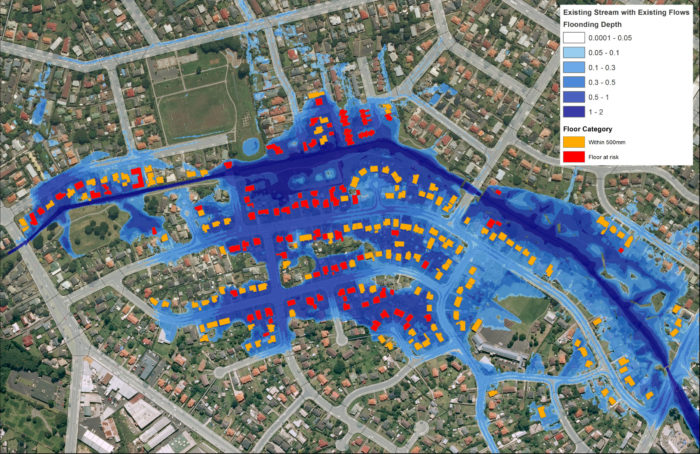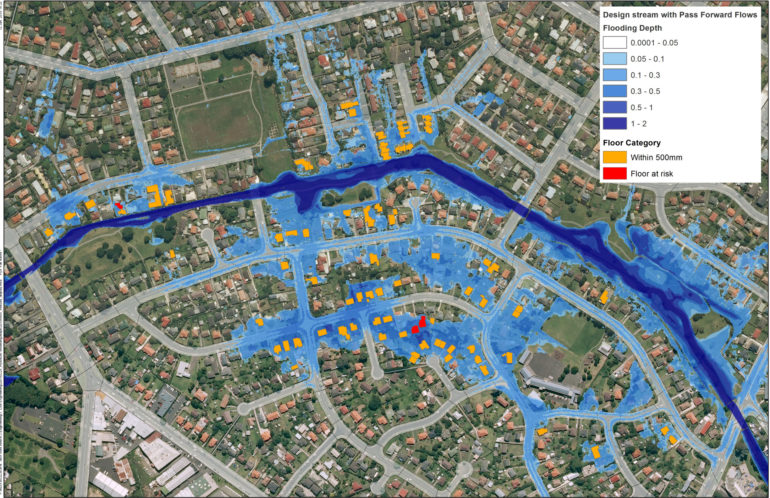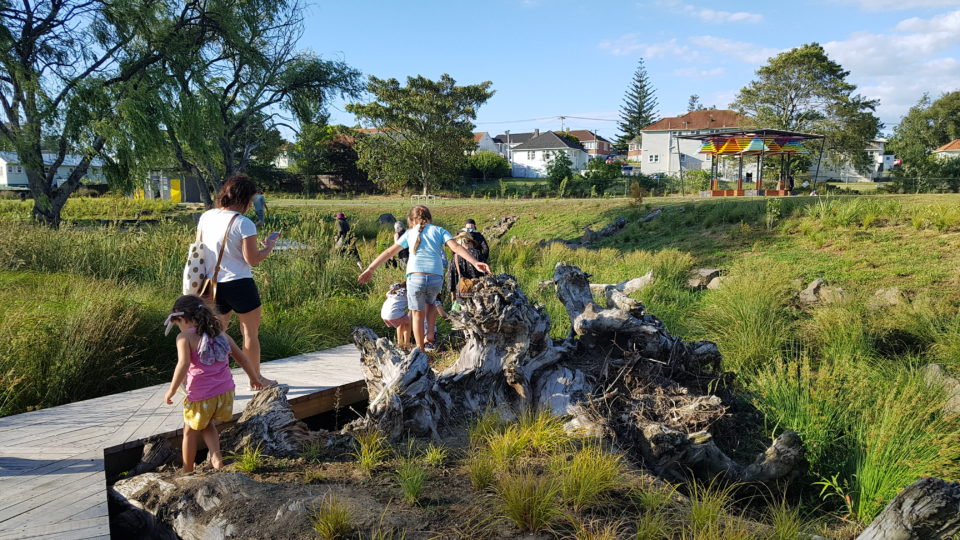An Auckland Council Healthy Waters project not just remedies flooding issues for a stormwater catchment, but delivers a water sensitive, green design project and a new connected community floodplain/open space. Article by Mark Lewis from Boffa Miskell and Shaun Jones (formerly of Aecom).
Te Auaunga (previously Oakley Creek) is an Auckland Council Healthy Waters project, which remedies flooding issues for over 200 homes in three Local Board areas.
During the course of the project, the focus shifted dramatically from a flood reduction project, to establishing a regionally significant river park to accommodate flood flows, enable housing intensification, and assist the regeneration of the community.
A flooding solution
The stream flowing through Walmsley and Underwood Reserves (the project site), was formed in the 1930s, when it was cut through underlying basalt to drain Wai o Rakataura, the ancient wetland of the area. Subsequent housing development caused an increase in stormwater runoff from the catchment, which combined with naturally occurring floodwaters led to a long history of dramatic flooding in the local low-lying neighbourhoods.
Significant remedial work was undertaken in 1954 and 1990 but despite these efforts, flooding continued in the catchment. The housing stock adjacent to the floodplain remained under-capitalised, with the community prevented from development or regeneration. Consequently, the community surrounding the project site has shown the highest scores for socio-economic deprivation in the country.
Flooding Before

Several studies over the past decade have investigated the best method to manage the flood plains within Te Auaunga Catchment. Most recently, Aecom New Zealand evaluated four options using a multi-criteria analysis (MCA) to adopt the catchment strategy.
Option one was to accept the present risk of flooding properties and homes in the catchment, recognising that development and climate change would exacerbate the problem.
Option two was to increase stream channel capacity to reduce habitable floor flooding, including the removal of hydraulic controls to direct flood flows from upper catchment areas.
Option three was to construct a two metre diameter tunnel to intercept excess flows from upstream reaches of Te Auaunga and divert them into the Manukau harbour.
Option four was to divert the upper Te Auaunga into the parallel Meola catchment via a tunnel.
These options were analysed against several parameters including cost, hydraulic performance, environmental effects, regulatory impediments, construction risk, and the ability to undertake the work in stages for available budgets. Option two was preferred as it could be delivered in stages and was low-cost.
The design team for Te Auaunga Project were Boffa Miskell (design lead and landscape architect), Aecom New Zealand (engineers), and McCoy Heine (fale architects). The construction contractor was McCoy HeineMcCoy Heine.
Te Auaunga was centred around the restoration of two kilometres of concrete channel, and the daylighting of seven tributaries to create new headwater streams.
Streams were restored with bioengineering approaches, by forming naturalised meander and channel profiles based on targeted flows, re-using natural materials harvested from site to maintain banks and channels, and ultimately relying on plants for streambank stability.
Flooding After

The design was adapted to respond to natural geologies and geological features. For example, basalt rock outcrops were primarily left in situ, with the density of the material determining the path of the stream, with excavated rock also being transferred to peat and alluvial sections of the stream channel.
Flood modelling demonstrated that the proposed channel would reduce the extent of the local floodplain, effectively removing historic development controls on private properties, potentially increasing zoning from single house residential to terrace and apartment buildings. In this sense, the project changed from a flood control project to enabling works for community intensification, with the potential to add thousands of new residential dwellings.
Work within the local watercourse could now respond to localised flooding issues and be a candidate for stream naturalisation and/or a ‘greenway’ as part of a connected community floodplain/open space. In this sense it was an overt response to the plight of a community that had long been marginalised by flooding in their catchment, providing an opportunity to respond to community aspirations, and provide an increased level of amenity to service future intensification.
The final project was a product of collaborative planning and design, undertaken with local community including Maori, and Auckland Council’s Healthy Waters, community facilities, and community development, arts and culture. This was facilitated through governance meetings, design workshops, a community liaison group, public open days and surveys, and school-based workshops to ensure all views were considered within the project objectives and final design.
The project has treated the water quality for the adjacent catchment through bioswales, raingardens and wetlands. A river park has been created from the floodplain with a network of shared pathways and pedestrian bridges, a community fale and atea space, and an outdoor classroom.
Following consultation with schools and the local community, play opportunities, including natural play, were scattered throughout the reserves; along with a BMX track that wove around and between the trees and existing landforms. The majority would appear upon exploration and offered children a unique experience to engage with their restored environment, to ‘get dirty’ and enliven their imaginations.
Traditional Maori play items (mara hupara) were integrated into the environments, which were chosen to speak to the restoration process, the traditional uses of Te Auaunga, and the historic wetland Wai o Rakataura.
Auckland Council worked with local training institutes and contractors to integrate social procurement into contract documents for the implementation of the project, and support community business development as part of the wider project delivery.
Te Auaunga continues to be the beneficiary of a fortuitous convergence of strategic planning processes in its catchment. The Waterview Highway project, planned for over 20 years, was delivered just in time to provide the flood conveyance required for the project. Kainga Ora (the newly reformed HNZC) is undertaking extensive urban regeneration in the area over the coming decade, making this project and further reaches to be restored upstream, key enablers for this growth.
Te Auaunga delivered on the aspirations of Auckland Council to deliver a water sensitive design project by delivering green infrastructure before built form (planned intensification) and providing for multiple benefits from stormwater works.
A strong mandate has arisen from the project for Auckland’s future development: to value, protect, and restore our streams as catalysing agents for community regeneration, as opportunities for enhanced water quality, and as a means to reawaken our urban residents to the value of their ‘natural’ environments.



